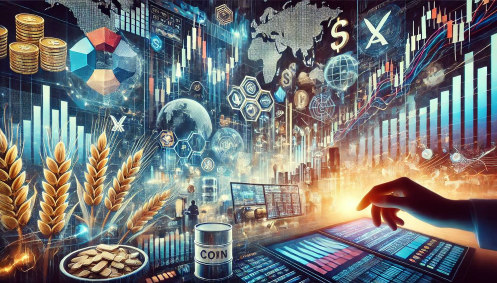
Futures contracts are essentially agreements to buy or sell an asset at a predetermined price at a specified time in the future. These financial instruments are used by investors to hedge against price changes or to speculate on future price movements of everything from commodities to currencies. The price of a futures contract is set based on the current price of the underlying asset, adjusted for factors such as interest rates and dividends over time until the contract’s expiration.
For example, the future price of an index is calculated by taking the current cash price of the index, adding expected interest that would be earned on the cash if it were invested, and subtracting any dividend yields expected during the period until the contract expires. This calculation helps traders make educated guesses about where the price of the asset will be in the future, which is why futures are often used as a financial planning tool to manage risk.
Historically, futures contracts started with agricultural commodities in the Chicago Board of Trade (CBOT) to meet the needs of farmers looking to lock in prices for their crops ahead of harvest. This concept expanded and now includes a variety of assets. Trading was initially done in trading pits at exchanges like the CBOT and the Chicago Mercantile Exchange (CME), where traders would use hand signals and verbal communication in what was often a chaotic and noisy environment.
The evolution from pit trading to electronic trading has significantly changed the dynamics of the futures markets. Electronic trading has increased market efficiency and accessibility, allowing for faster execution of trades and a greater volume of transactions. The shift also broadened the participation to a global audience, operating nearly 24 hours a day.
The CME, for instance, now offers a wide range of futures products beyond just agricultural commodities. These include futures on financial indices, like the S&P 500 and Dow Jones Industrial Average, which are among the most widely followed equity indices in the world. In addition to index futures, there are also interest rate futures, which are based on instruments such as U.S. Treasury bonds and bills, and other financial instruments.
Currency futures are another significant area of the futures market, allowing traders to hedge or speculate on changes in exchange rates between different currencies. These futures are crucial for companies operating internationally, helping them manage currency risk arising from fluctuations in exchange rates.

Commodity futures still remain central to futures trading, encompassing traditional agricultural products like corn, wheat, and soybeans, as well as metals like gold and silver, and energy commodities like crude oil and natural gas.
An interesting development in the futures market is the advent of single-stock futures, which are futures contracts on individual stocks. These offer traders and investors a new way to gain exposure to stock price movements without having to own the underlying stocks directly.
The advent of “minis” in futures trading has also made this market more accessible to individual investors. Minis are smaller-sized contracts that require less capital and carry less risk than standard futures contracts. Examples include the E-mini S&P 500 and the Micro E-mini contracts, which have lower margin requirements and allow traders to participate in index futures markets with significantly smaller investments.
Overall, the futures market plays a critical role in the global financial system, offering tools for risk management, speculative opportunities, and price discovery. Whether it’s a farmer wanting to lock in a price for crops or an investor looking to hedge against stock market volatility, futures contracts provide a vital mechanism for managing the uncertainties of future prices.